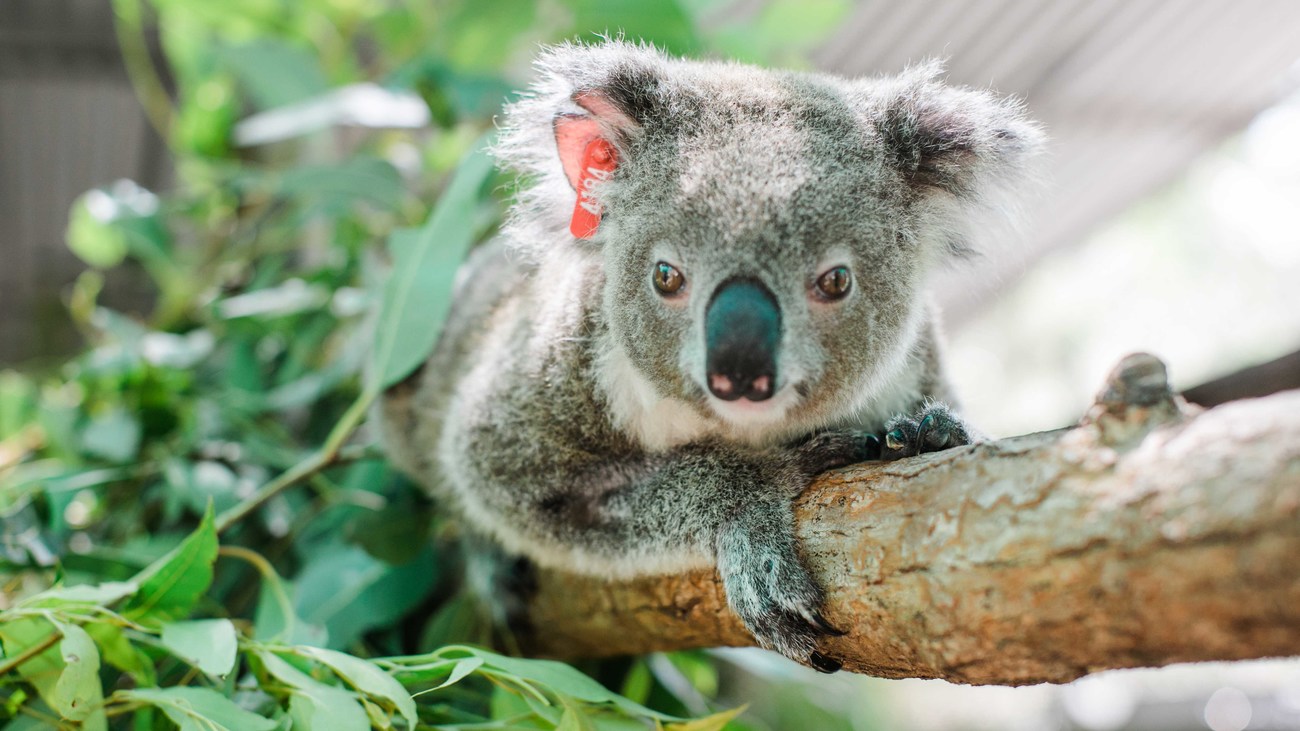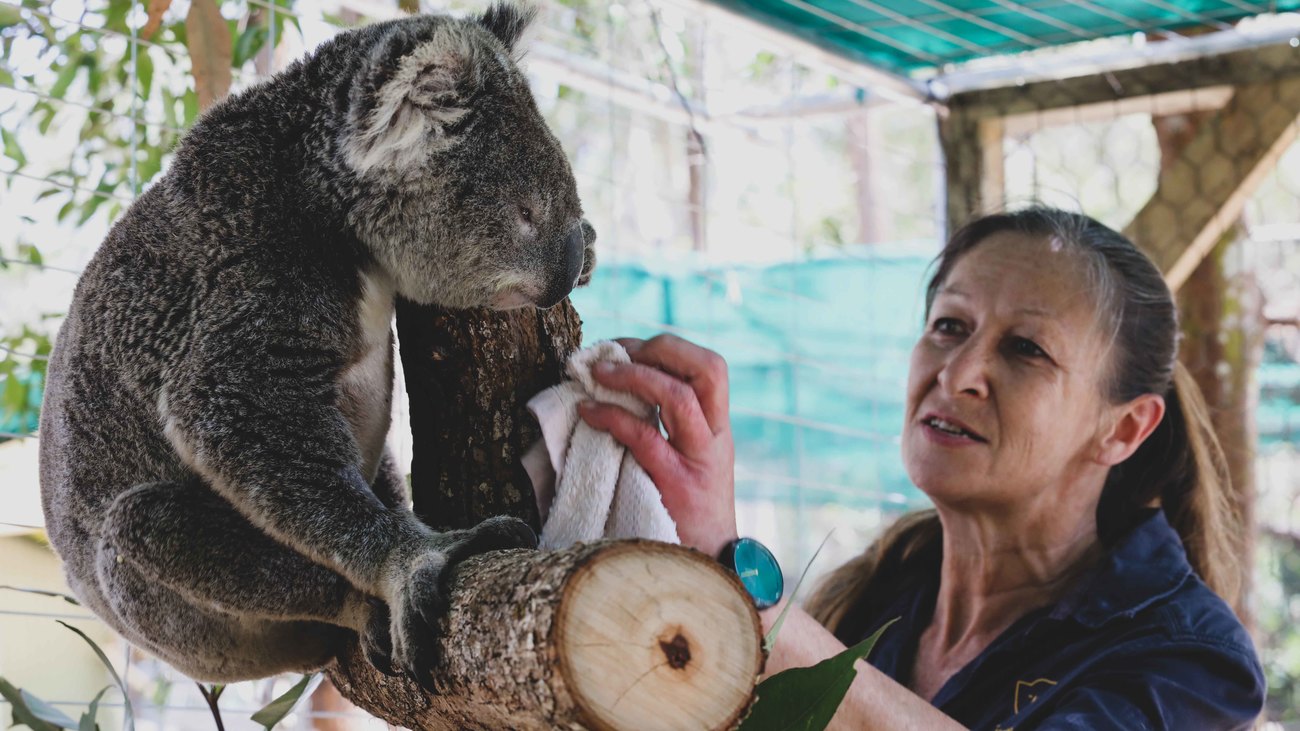Koala Protection: Rescue, Rehabilitate, Release, and Secure - Australia, New South Wales
Planting a future for koalas, one tree at a timewhat it's like to rehabilitate a koala
what it's like to rehabilitate a koala

Koalas in New South Wales are up against a lot. Disease, habitat loss, vehicle strikes, dog attacks, bushfires and climate change are putting this iconic species at risk of extinction.
Every koala rescued, rehabilitated and released back into the wild is crucial for the conservation of the species. That’s why we forged a unique, special and long-standing partnership with Friends of the Koala in northern New South Wales. Our relationship started as advocating together for better protections for koalas, and has grown to our funding of Friends of the Koala’s full-time vet team to ensure koalas receive immediate specialist on-site treatment and care.
Friends of the Koala’s holistic approach to koala conservation is something IFAW champions because we share the belief that koalas are ambassadors for Australian wildlife. When we protect them and their habitat, we give countless other animals the chance to thrive.
We quizzed two members of the IFAW-sponsored vet team – superintendent vet Jackie Reed and senior vet nurse Marley Christian about the work they do, and we do together.
What are the most common injuries or illnesses you see in koalas?
Jackie: The most common injuries we see are from dog attacks and motor vehicle collisions. These are usually very severe and require the most intensive treatments. Other injuries include broken bones sustained from tree falls and tramples by cows.
The major illness we treat is chlamydia which is a very infectious disease between koalas. It can cause conjunctivitis, pneumonia, and other respiratory issues.
What are some of the rarer injuries you see?
Jackie: The rarer diseases we see are skin diseases caused by mites, fungal (which has been more common this season with all the wet weather) or a bacterial infection. Burns are also something we encounter during the bushfire season.
Tell us about Friends of the Koala’s rescue, rehab and release process.
Jackie: Friends of the Koala operates a volunteer-run 24/7 rescue hotline which receives calls from members of the public who have encountered a sick, injured, or orphaned koala within the New South Wales Northern Rivers region.
Once admitted to our koala hospital, the IFAW-sponsored vet team assesses and triages koalas. If the prognosis is poor, koalas are euthanased to prevent further suffering. Koalas can be in rehabilitation for a couple of hours or several months depending on their injury or illness. While in care, koalas are monitored daily and receive specialised veterinary treatment.
Upon release, koalas undergo a final vet check. Depending on the length of their rehabilitation, they may need to be transferred to a soft release enclosure where they can learn to climb and regain muscle strength before their eventual return to the wild.
In most cases, koalas are released back to their home range.
What was the most remarkable comeback you’ve witnessed in a koala?
Jackie: Regi was an adult male koala that was mauled by dog in a suburban backyard. Regi spent many months in care with courses of antibiotics. After endless bandage changes, lots of anesthetics, antibiotics, and pain relief he turned a corner, and we knew he would be a survivor. He made it against all odds and was finally released back to his home range.

Is there a particular koala release that really had an impact on you?
Marley: Ember had a memorable impact on me and many others. She was a casualty from the 2019-20 summer bushfires. Fortunately, a landowner spotted her walking on the fireground. She was barely two years old. Her fur was black, coated in soot and badly singed. Her lungs were congested from smoke inhalation and she suffered serious burns to her rump and all four paws.
After months of ongoing treatment and fattening up, this lucky survivor was ready for release. Ember was transferred to a soft release site where we could monitor her ability to climb and forage—and she passed with flying colours. I was in awe, what a survivor! She has since been released and landowners have recently seen her happy and healthy with a joey in her pouch.
What is the main threat facing koalas?
Jackie: Habitat loss. As habitat becomes smaller and more fragmented, koalas are forced to travel on foot through urbanised and agricultural areas. Once on the ground they become vulnerable to vehicle strikes and dog attacks. These threats result in elevated stress levels which can cause outbreaks of infectious diseases.
How has IFAW helped you to help koalas?
Marley: We began working with IFAW to advocate for better protections for koalas. Our relationship has evolved over time and they now sponsor our vet team – allowing us to provide immediate care to sick and injured koalas.
IFAW’s support made our dream of having a full-time veterinary team for our koala hospital come true. They first sponsored me – and I became the first member of our now four-person vet team. Through their critical support, it allowed for more consistency around monitoring and care of koalas in rehabilitation.
Without IFAW we would not be able to treat koalas immediately onsite. Instead, koalas would have to endure the stress of being transported to local vets or to Currumbin Wildlife Hospital—which is more than two hours away. Because of IFAW, koalas can receive immediate veterinary care and treatment which increases their chances of survival.
IFAW also provided critical support and resources during the Black Summer bushfires and deployed IFAW x USC koala detection dog Bear to help us find surviving koalas in the bushfire-ravaged land. They are helping us prepare for future emergencies through an evacuation workshop where they share resources and expertise so we can safely look after our own lives as well as the lives of the koalas we care for when disaster strikes again.
Related content
Every problem has a solution, every solution needs support.
The problems we face are urgent, complicated, and resistant to change. Real solutions demand creativity, hard work and involvement from people like you.